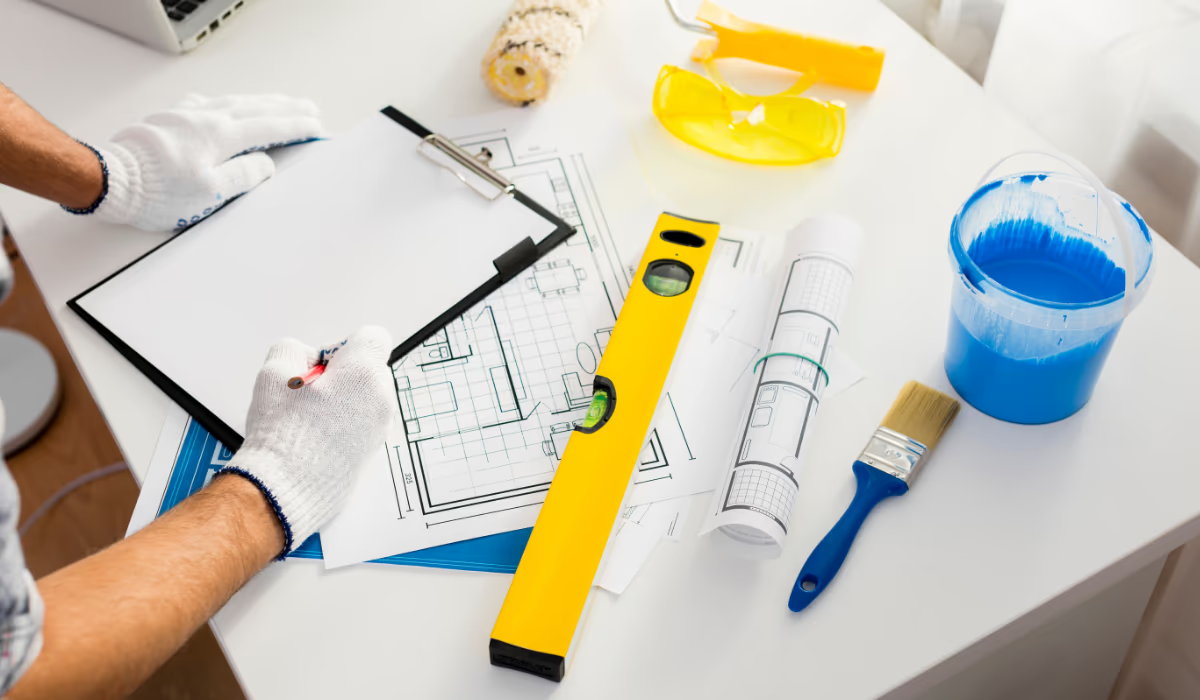Renovating the interior of your home is a chance to make spaces work better, reflect your taste, and add long-term value. Many homeowners start with a list of things they dislike about their home but underestimate the time, expense, decisions, and disruptions involved. Interior home renovations require thoughtful planning—from layout and materials to costs and contractor selection. Getting clarity before you start saves stress, surprises, and regret.
Setting Your Goals & Budget
Before picking paint colors or fixtures, the first step in any interior remodeling is defining what you want to achieve. Are you renovating for style, comfort, expanding space, improving functionality, or preparing to sell? Understanding your primary goals shapes every decision that follows. Once the goals are clear, figuring out how much you can spend is essential; a realistic budget should include a cushion for unforeseen costs or upgrades you may decide on during the project.
Choosing What to Remodel First
Not all interior renovations offer the same impact or return. Kitchens and bathrooms often dominate remodeling plans because improvements there are highly visible and affect daily use. Living rooms, flooring, lighting, and storage are also powerful zones to work on. Prioritize the areas that bother you most or that are most used; if you fix things that matter most to your lifestyle, you’ll get satisfaction earlier and more frequently.
Materials, Finishes & Details Matter
The choices you make in finishes, fixtures, flooring, lighting, and cabinetry affect both cost and how your renovation ages. Materials that look good now might show wear quickly if they’re cheap or not suited for heavy use. Finishes like matte vs gloss, the sheen of paint, the hardness of wood, or quality of hardware are often where people later regret choosing “just acceptable” over “better.” Lighting and trim details that seem small end up shaping how you feel in the space more than big investments do.
Contractors, Permits & Timeline
Interior remodeling almost always involves trades: carpenters, electricians, plumbers, painters. Hiring good contractors with proven experience and clear references makes a huge difference. Also make sure all local permits are arranged before work begins—failing to do so can mean fines or having to redo sections later. A timeline will always shift somewhat, but aligning expectations with your contractor about deadlines, working hours, material deliveries, and cleanup helps keep the project smooth.
Living Through Renovations
One thing many don’t fully anticipate is what living in a home under renovation feels like. Dust, noise, lost access to parts of the house, displaced furniture, and changing routines will happen. Planning for some of this in advance helps: set up temporary living or food prep areas if needed; protect floors and furniture; schedule work so you have breaks, especially during heavy work like demolition. Being mentally prepared and keeping communication open with family or roommates helps reduce tension.
Trends & Ideas to Consider
Modern interior renovations increasingly focus on open layouts, built-in storage, natural light, energy efficiency, and sustainable materials. Designers are favoring warm woods, mixed metals, textures, understated lighting, and neutral or earthy color palettes. Smart home integrations—lighting, heating, security—also add value and comfort. Also, adaptive design (making spaces usable for aging in place) is becoming more common.
Conclusion
Interior home renovations are rewarding but complex; the best results come when you plan thoroughly, prioritize what matters most, choose quality materials, work with reliable contractors, and prepare for the day-to-day realities of living through the process. With clear goals, a realistic budget, and attention to details, you can transform your home into a space that’s beautiful, functional, and lasting.
FAQs
How much should I expect an interior renovation to cost?
Costs vary a lot depending on location, scope, materials, and labor. Small projects might run a few hundred to a few thousand dollars, large renovations many times more. Always get multiple quotes and include a buffer for unexpected expenses.
How long do interior home renovations usually take?
Simple remodels (paint, flooring, fixtures) might take a few weeks. Bigger projects involving structural changes, plumbing, or electrical work can last months. Permit timelines and material delays also add time.
Do I need to move out during major renovations?
Not always, but for major work (kitchen, bathrooms, full-floor changes) living in place can be disruptive. If possible, plan for alternative arrangements or sections of your home where life can continue more comfortably.
How do I choose the right finishes and materials?
Consider durability, maintenance, style, and how well the material holds up in the conditions of that room (moisture, traffic, heat). Test samples when possible, examine real installations, and avoid simply following trends.
What are common renovation mistakes to avoid?
Underestimating costs, not planning for delays, ignoring permits or building codes, choosing finishes based only on price or looks without considering durability, and rushing decisions are often the biggest regrets.







